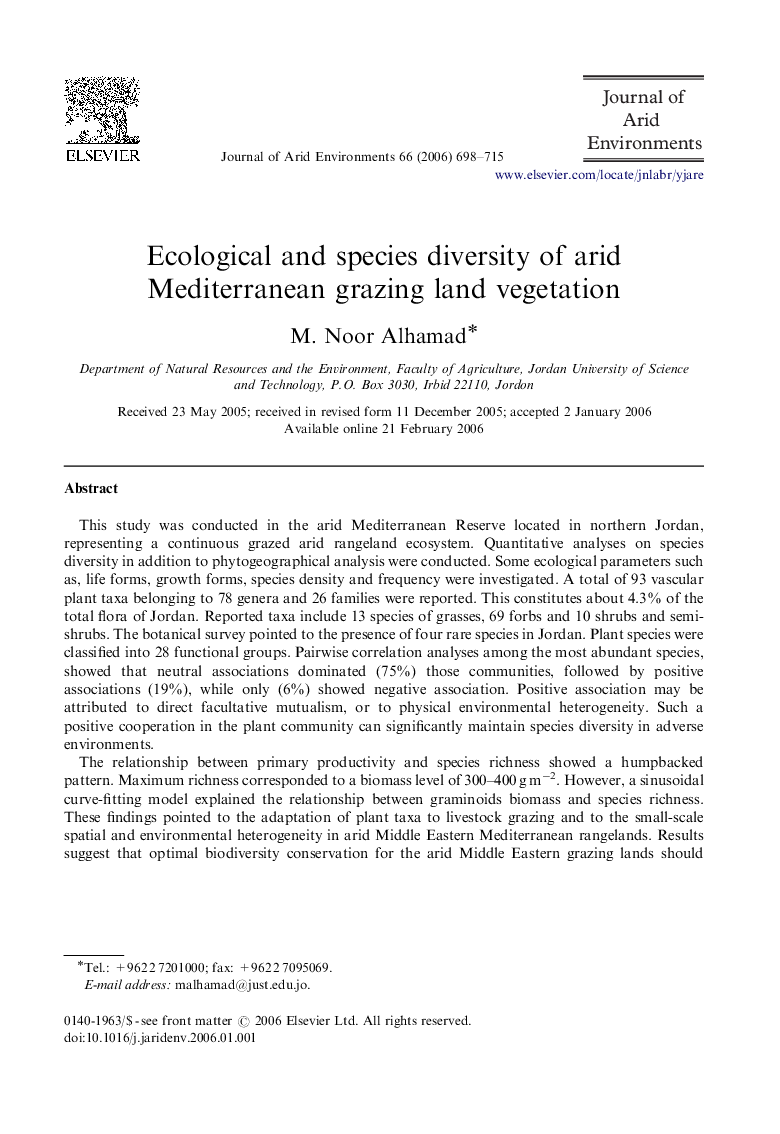| کد مقاله | کد نشریه | سال انتشار | مقاله انگلیسی | نسخه تمام متن |
|---|---|---|---|---|
| 4394906 | 1305567 | 2006 | 18 صفحه PDF | دانلود رایگان |

This study was conducted in the arid Mediterranean Reserve located in northern Jordan, representing a continuous grazed arid rangeland ecosystem. Quantitative analyses on species diversity in addition to phytogeographical analysis were conducted. Some ecological parameters such as, life forms, growth forms, species density and frequency were investigated. A total of 93 vascular plant taxa belonging to 78 genera and 26 families were reported. This constitutes about 4.3% of the total flora of Jordan. Reported taxa include 13 species of grasses, 69 forbs and 10 shrubs and semi-shrubs. The botanical survey pointed to the presence of four rare species in Jordan. Plant species were classified into 28 functional groups. Pairwise correlation analyses among the most abundant species, showed that neutral associations dominated (75%) those communities, followed by positive associations (19%), while only (6%) showed negative association. Positive association may be attributed to direct facultative mutualism, or to physical environmental heterogeneity. Such a positive cooperation in the plant community can significantly maintain species diversity in adverse environments.The relationship between primary productivity and species richness showed a humpbacked pattern. Maximum richness corresponded to a biomass level of 300–400 g m−2. However, a sinusoidal curve-fitting model explained the relationship between graminoids biomass and species richness. These findings pointed to the adaptation of plant taxa to livestock grazing and to the small-scale spatial and environmental heterogeneity in arid Middle Eastern Mediterranean rangelands. Results suggest that optimal biodiversity conservation for the arid Middle Eastern grazing lands should consider their high level of spatial heterogeneity. Rangeland managers should adopt grazing plans that apply a range of grazing pressure across the area so as to maintain diversity at local and regional scales.
Journal: Journal of Arid Environments - Volume 66, Issue 4, September 2006, Pages 698–715